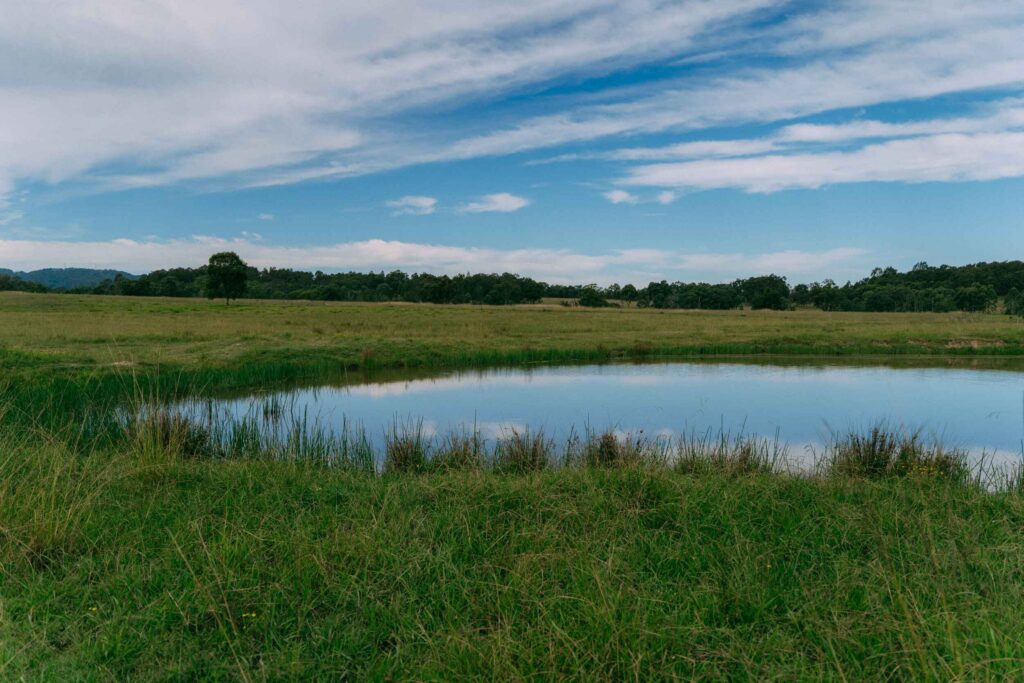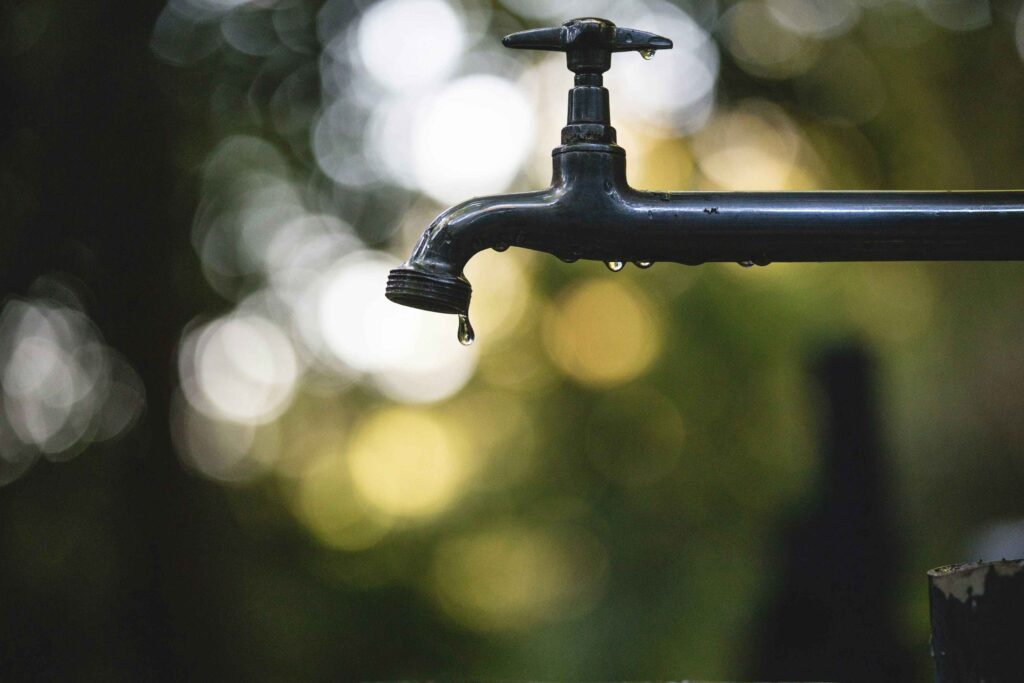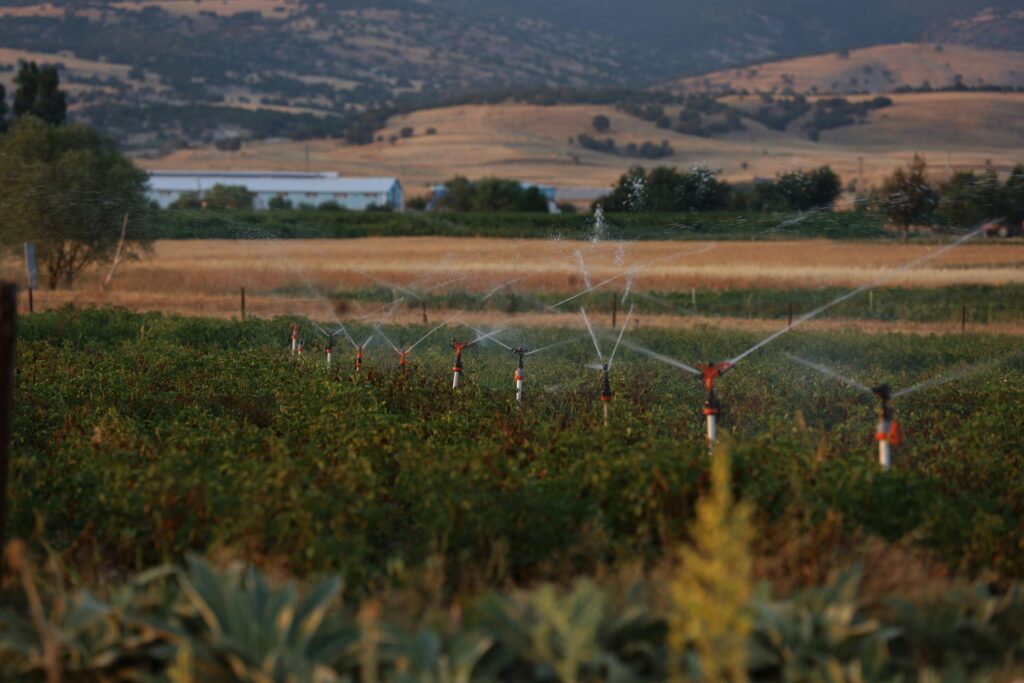Transforming your farm dam or pond into a thriving aquatic ecosystem through strategic fish stocking offers remarkable benefits for Australian property owners. Whether you’re pursuing food self-sufficiency, creating recreational fishing opportunities, or enhancing your water system’s ecological balance, proper fish stocking can revolutionise your rural property’s productivity and enjoyment.
This comprehensive guide walks you through every aspect of successful fish stocking in Australia, from species selection and legal requirements to ongoing maintenance and harvesting strategies.
What Is Fish Stocking and Why Do It?
Fish stocking involves deliberately introducing juvenile fish (fingerlings) into natural or artificial water bodies to establish sustainable fish populations. For Australian landowners, this practice transforms underutilised dams and ponds into productive assets that serve multiple purposes.
Food Production and Self-Sufficiency Benefits
Fresh fish from your own property provides an excellent protein source that reduces reliance on commercial suppliers. A well-managed 1-hectare farm dam can yield 200-500kg of fish annually, depending on species and management practices. This translates to significant savings on grocery bills whilst ensuring you know exactly how your food was raised.
Native species like Murray cod and golden perch offer exceptional eating quality, whilst faster-growing species such as silver perch can provide regular harvests within 12-18 months of stocking. The controlled environment of your dam means no commercial fishing pressures, hormones, or unknown feed additives – just clean, sustainable protein.
Recreational Fishing and Lifestyle Value
A well-stocked dam creates an instant recreational asset that enhances property value and family enjoyment. Children learn fishing skills and develop appreciation for aquatic ecosystems, whilst adults enjoy stress-relief and social opportunities without leaving home.
Quality fishing experiences attract visitors and can support agritourism ventures. Properties with established fishing opportunities often command premium prices and faster sales when marketed.
Ecological Balance and Pest Control
Strategically chosen fish species provide natural pest control by consuming mosquito larvae, midges, and other unwanted insects. This biological control reduces reliance on chemical treatments and creates a more pleasant outdoor environment.
Fish also help maintain water clarity by controlling algae through direct consumption and nutrient cycling. Their waste fertilises aquatic plants, whilst their feeding activities distribute nutrients throughout the water column, supporting healthy ecosystem balance.

Key Considerations Before Fish Stocking
Successful fish stocking requires careful assessment of your water body’s suitability and understanding of regulatory requirements.
Dam or Pond Suitability
Size Requirements: Minimum surface area of 0.1 hectares (1,000m²) provides adequate space for sustainable fish populations. Smaller ponds can support fish but require more intensive management and lower stocking densities.
Depth Considerations: At least 2 metres maximum depth ensures fish survival during temperature extremes. Deeper areas (3-4 metres) provide thermal refuges during summer heat and winter cold snaps.
Water Source Stability: Reliable water input maintains consistent levels essential for fish survival. Rainwater harvesting techniques can supplement natural inflows during dry periods.
Bank Structure: Gradual sloping banks with 20-30% vegetation coverage provide spawning habitat and protection from predators whilst preventing excessive erosion.
Water Quality Requirements
pH Levels: Most Australian native fish thrive in pH 6.5-8.5. Test monthly using digital pH metres or test strips, adjusting with agricultural lime if consistently below 6.5.
Dissolved Oxygen: Minimum 5mg/L oxygen supports healthy fish populations. Install solar aerators in deeper dams or those with high organic loads to maintain adequate oxygen levels.
Temperature Range: Different species have varying temperature tolerances. Murray cod prefer 15-25°C, whilst barramundi require 20-30°C. Consider your regional climate when selecting species.
Nutrient Levels: Excessive nitrogen and phosphorus cause algae blooms that deplete oxygen. Monitor nitrate levels monthly, particularly after rainfall or fertiliser application on surrounding land.
Fish Stocking Legal Requirements and Permits
New South Wales: NSW DPI requires permits for most fish stocking activities. Native species generally have streamlined approval processes, whilst introduced species face stricter controls. Contact your local DPI fisheries office before purchasing fingerlings.
Victoria: VFA permits required for private water body stocking. Murray cod, golden perch, and silver perch approved for most areas, subject to translocation guidelines preventing genetic contamination of wild populations.
Queensland: DAF permits mandatory for all fish stocking. Barramundi permitted in northern regions, trout restricted to cooler southern areas. Check specific regional restrictions as rules vary by catchment.
South Australia: PIRSA permits required, with emphasis on preventing escape to natural waterways. Native species strongly preferred over introduced alternatives.
Western Australia: DPIRD strictly controls fish stocking to protect unique native fish communities. Limited species approved, with strict containment requirements.
Tasmania: DPIPWE permits required. Trout stocking well-established, native species options limited but expanding.
Choosing the Right Fish Species for Australia
Species selection determines your stocking success, with native fish generally offering better adaptation to local conditions and fewer regulatory hurdles.
Native Species
Murray Cod (Maccullochella peelii): Australia’s largest native freshwater fish, reaching 15-20kg in suitable conditions. Excellent eating quality, strong recreational appeal. Requires larger dams (minimum 0.5 hectares), good structure, and patience (4-7 years to table size). Stock at 200-400 fingerlings per hectare.
Golden Perch (Macquaria ambigua): Hardy, fast-growing native reaching 1-3kg. Adapts well to varying water conditions, breeds readily in impoundments. Excellent eating, shorter growing period (2-3 years). Stock at 500-1,000 fingerlings per hectare.
Silver Perch (Bidyanus bidyanus): Fast-growing, reaching 1-2kg within 18 months. Takes supplementary feeding well, making them ideal for intensive management. Good eating quality, hardy in most conditions. Stock at 1,000-2,000 fingerlings per hectare.
Australian Bass (Macquaria novemaculeata): Native species occurring along eastern and southeastern coastlines. Australian bass will not breed in farm dams or impoundments, requires salt water for egg and larval development, although they spend most of the year in freshwater they move down into the estuary during winter to breed. Bass are usually difficult to convert to artificial food in farm dams. For these reasons stocking rates should be relatively low, about 200-300 per hectare. Excellent eating quality, slower growing than perch species (18-24 months to table size). Suitable for coastal regions and areas within their natural range.
Barramundi (Lates calcarifer): Premium eating fish for northern Australia (Queensland, Northern Territory, northern WA). Requires water temperatures above 20°C year-round. Fast growth to 3-8kg, excellent for both recreational and commercial harvesting. Stock at 500-1,000 fingerlings per hectare in suitable climates.
Trout for Cooler Southern Climates
Rainbow Trout (Oncorhynchus mykiss): Well-established introduced species for southern regions. Requires cool, well-oxygenated water (below 20°C). Excellent eating, strong recreational following. Stock at 200-500 fingerlings per hectare in suitable conditions.
Brown Trout (Salmo trutta): Longer-lived than rainbow trout, better adapted to varying conditions. Grows larger (2-5kg possible), excellent sporting fish. More aggressive feeding behaviour. Stock at 100-300 fingerlings per hectare.
Species Restrictions and Seasonal Recommendations
Prohibited Species: Tilapia, carp, and other invasive species are strictly prohibited across Australia. These species cause significant ecological damage and carry heavy penalties for possession or release.
Seasonal Stocking: Spring (September-November) and autumn (March-May) provide optimal stocking conditions. Avoid summer stocking due to temperature stress and winter stocking in cooler regions where fish growth slows significantly.
| Species | Best Regions | Optimal Stocking Season | Water Temperature Range |
| Murray Cod | Southern Australia | October-November | 15-25°C |
| Golden Perch | All temperate regions | March-May, September-November | 12-28°C |
| Silver Perch | All mainland regions | March-May, September-November | 10-30°C |
| Australian Bass | Eastern/southeastern coastal regions | September-November | 15-28°C |
| Barramundi | Northern Australia | April-June, September-November | 20-30°C |
| Rainbow Trout | Cool southern regions | March-May | 8-18°C |
| Brown Trout | Cool southern regions | March-May | 6-16°C |
Step-by-Step Fish Stocking Process
Proper stocking technique significantly impacts fingerling survival and long-term population establishment.
Calculating Stocking Density
Surface Area Method: Measure dam surface area accurately using GPS mapping apps or surveyor measurements. Stock according to species-specific recommendations, adjusting for water depth and quality factors.
Carrying Capacity Assessment: Factor in natural food availability, aeration, and intended management intensity. Intensive management with supplementary feeding supports higher densities.
Example Calculation: 1-hectare dam suitable for silver perch
- Base stocking rate: 1,500 fingerlings/hectare
- Adjust for excellent water quality: +20% = 1,800 fingerlings
- Adjust for planned supplementary feeding: +15% = 2,070 fingerlings
- Final stocking number: 2,000 fingerlings (rounded for practical ordering)
Australian Bass Example: 1-hectare dam in coastal NSW
- Base stocking rate: 250 fingerlings/hectare (conservative due to feeding challenges)
- Adjust for natural food availability: No adjustment needed
- Final stocking number: 250 fingerlings
Transporting and Acclimatising Fingerlings
Transportation: Use insulated containers with battery-powered aerators for journeys exceeding 30 minutes. Maintain water temperature within 2°C of origin temperature. Transport during cooler parts of the day to minimise stress.
Acclimatisation Process:
- Float transport bags in dam water for 20-30 minutes to equalise temperatures
- Gradually add dam water to transport containers over 15-20 minutes
- Test pH differences between transport and dam water – adjust gradually if differences exceed 0.5 pH units
- Monitor fish behaviour for stress indicators (rapid gill movement, floating, erratic swimming)
Safe Release Methods
Release Timing: Early morning or evening hours minimise thermal shock and predation pressure. Avoid release during extreme weather conditions.
Location Selection: Release fingerlings near structural cover (submerged logs, rock piles, aquatic vegetation) providing immediate shelter. Distribute releases across multiple locations for larger stockings.
Handling Technique: Pour fingerlings gently just below water surface. Never throw or dump fingerlings from height. Minimise air exposure and handle containers gently throughout the process.
Post-Release Monitoring: Observe for 30-60 minutes after release, noting any unusual behaviour or mortality. Document stocking date, numbers, species, and conditions for future reference.
Fish Stock Feeding and Maintenance
Ongoing management determines whether your stocked fish thrive or merely survive.
Natural Food Sources vs Supplementary Feeding
Natural Food Chain: Healthy dams support phytoplankton, zooplankton, aquatic insects, yabbies, and small fish that provide complete nutrition for stocked species. Established systems often require minimal supplementation.
Supplementary Feeding Benefits: Accelerates growth rates by 30-50%, supports higher stocking densities, and provides insurance during natural food shortages. Commercial fish pellets formulated for Australian species offer balanced nutrition.
Feeding Guidelines:
- Feed 2-3% of estimated fish biomass daily during active growing season
- Reduce feeding in winter when fish metabolism slows
- Feed small amounts multiple times rather than large single feeds
- Monitor consumption – uneaten food degrades water quality
- Use floating pellets to monitor intake and prevent waste
Regular Water Quality Testing
Essential Test Parameters:
- Dissolved Oxygen: Test weekly during summer, monthly during winter
- pH: Monthly testing, more frequently after heavy rains
- Ammonia/Nitrite: Monthly during first year after stocking
- Temperature: Daily maximum/minimum recording aids management decisions
Testing Equipment: Digital pH/oxygen metres provide accurate readings but require calibration. Test strips offer convenient field testing with reasonable accuracy for most parameters.
Record Keeping: Maintain water quality logs documenting test results, weather conditions, and fish behaviour observations. Patterns help predict and prevent problems.
Controlling Predators and Algae
Predator Management: Cormorants, herons, and other water birds can significantly impact fingerling populations. Install bird deterrents during the first 6 months post-stocking when fish are most vulnerable.
Algae Control:
- Maintain beneficial bacteria through minimal chemical use
- Install aeration to prevent oxygen depletion
- Control nutrient inputs from surrounding land use
- Introduce filter-feeding fish species to consume algae naturally
- Consider biological algae treatments over harsh chemicals
Weed Management: Moderate aquatic vegetation (20-30% coverage) benefits fish habitat. Excessive growth requires mechanical removal or targeted herbicide treatment following label directions carefully.
Fish Stocking Refresh Intervals
Assessment Timing: Evaluate populations 18-24 months post-stocking through test netting or fishing observations. Look for age class diversity and appropriate growth rates.
Supplemental Stocking: Add 10-20% of original stocking numbers annually to maintain genetic diversity and compensate for natural mortality.
Complete Restocking: Every 5-7 years for most species, depending on natural recruitment success and harvesting pressure.
Fish Stock Harvesting and Ongoing Management
Sustainable harvesting maintains healthy populations whilst providing regular food production.
When and How to Harvest
Size-Based Harvesting: Remove fish reaching optimal eating size (varies by species) whilst retaining breeding stock. Murray cod: 55-70cm, Golden perch: 35-45cm, Silver perch: 30-40cm, Australian bass: 30-40cm.
Selective Harvesting: Target fastest-growing individuals to maintain genetic diversity and prevent overcrowding. Remove obviously diseased or deformed fish immediately.
Harvesting Methods:
- Angling: Most selective method, excellent for recreational value
- Fyke netting: Efficient for commercial-scale harvesting, requires permits in most states
- Electrofishing: Professional-only method, useful for population surveys
Seasonal Considerations: Avoid harvesting during breeding seasons (varies by species and region). Peak condition often occurs in late autumn when fish have built fat reserves.
Record-Keeping for Healthy Populations
Population Monitoring: Document harvest numbers, sizes, and weights to track population dynamics and growth rates. Photograph significant catches with measurements.
Health Observations: Note any diseases, parasites, or abnormal behaviour. Early detection prevents population-wide problems.
Environmental Correlations: Link fish performance with weather patterns, water quality measurements, and management changes to optimise future practices.
Financial Records: Track all costs (fingerlings, feed, equipment) and benefits (harvest value, saved food costs) to demonstrate economic viability.
Re-stocking Schedules and Best Practices
Annual Assessment: Conduct thorough population evaluation each autumn when fish are most active and visible.
Genetics Management: Source fingerlings from different suppliers periodically to maintain genetic diversity and prevent inbreeding depression.
Disease Prevention: Quarantine new fingerlings when possible, source from certified disease-free facilities, and maintain optimal water quality to support natural immunity.
Adaptive Management: Adjust stocking densities, species composition, and management practices based on observed results and changing conditions.
Fish Stocking Costs and Economic Considerations
Understanding the financial investment and returns helps make informed stocking decisions.
Fingerling Prices by Species
| Species | Fingerling Size | Current Price Range | Bulk Price (100+) |
| Murray Cod | 5-8cm | $5.00-$25.00 | $1.80-$6.00 |
| Golden Perch | 4-6cm | $2.00-$12.00 | $1.20-$3.00 |
| Silver Perch | 4-6cm | $2.00-$12.00 | $1.20-$3.00 |
| Australian Bass | 4-6cm | $1.60-$8.00 | $1.60-$4.00 |
| Barramundi | 5-8cm | $10.00-$50.00 | $3.00-$15.00 |
| Rainbow Trout | 5-8cm | $2.00-$8.00 | $1.50-$4.00 |
Prices current as of 2024-2025 and vary significantly by supplier, quantity, season, and location. Single fish purchases cost considerably more than bulk orders. Contact suppliers directly for current pricing and minimum order quantities.
Setup Costs
Essential Equipment:
- Solar Aerator: $800-$2,500 (depending on dam size and power requirements)
- Water Testing Kit: $150-$400 (basic pH/oxygen kit to comprehensive test kit)
- Fish Feeder (optional): $300-$1,200 (automatic feeders for intensive management)
- Transport Equipment: $100-$300 (containers, aerators for fingerling collection)
Infrastructure Improvements:
- Fish Habitat Enhancement: $500-$2,000 (logs, rocks, artificial structures)
- Predator Deterrents: $200-$800 (bird deterrents, protective covers)
- Access Improvements: $500-$3,000 (jetty, fishing platforms, vehicle access)
Ongoing Maintenance Costs
Annual Operating Expenses:
- Supplementary Feed: $200-$800 per hectare annually (varies with feeding intensity)
- Water Quality Testing: $100-$300 annually (test kits, replacement reagents)
- Equipment Maintenance: $100-$400 annually (aerator servicing, replacement parts)
- Restocking: $200-$1,000 per hectare (supplemental fingerlings every 2-3 years)
Return on Investment: Well-managed fish populations typically recover initial costs within 3-5 years through food production savings and property value enhancement. Premium species like Murray cod can provide $10-$20 per kilogram value compared to shop prices.
Water Testing Products and Suppliers
Professional Equipment:
- Hanna Instruments Australia: Digital pH and dissolved oxygen metres
- TPS Australia: Comprehensive water quality monitoring equipment
- Aquaread: Multi-parameter water quality probes
Consumer Testing Kits:
- API Freshwater Master Test Kit: Comprehensive testing for pH, ammonia, nitrite, nitrate
- Sera Test Kits: German-made precision testing kits available through aquarium suppliers
- Tetra EasyStrips: Quick test strips for basic water quality parameters
Government Resources and Permit Information
Federal Resources:
- Australian Government Department of Agriculture: National aquaculture policies and interstate transport regulations
- CSIRO: Research publications on sustainable aquaculture practices
State Government Contacts:
- NSW DPI Fisheries: 1300 550 474 – Stocking permits and technical advice
- VFA Victoria: 136 186 – Licensing and translocation permits
- DAF Queensland: 13 25 23 – Stocking permits and species advice
- PIRSA South Australia: (08) 8226 0900 – Aquaculture licensing
- DPIRD Western Australia: 1300 374 731 – Strict species controls
- DPIPWE Tasmania: 03 6165 3110 – Limited stocking options
Final Tips for a Healthy, Productive Dam
Success in fish stocking comes from careful planning, appropriate species selection, and ongoing commitment to water quality management. Start with thoroughly tested water quality, obtain all required permits before purchasing fingerlings, and choose species suited to your climate and management goals.
Consider your dam as a complete ecosystem requiring balance between fish, plants, and water quality. Invest in adequate aeration for deeper dams, maintain detailed records of all management activities, and be patient – establishing sustainable fish populations takes 2-3 years but provides decades of benefits.
Most importantly, stay within legal requirements and focus on environmental responsibility. Properly managed private fisheries support conservation efforts whilst providing outstanding returns on investment through food production, recreation, and property value enhancement.
Whether you’re building a new water feature or enhancing an existing dam, integrating fish stocking with other sustainable practices maximises benefits. Consider linking your fish management with building a pond or dam for self-sufficient living and water-saving techniques for drought-prone properties to create comprehensive water resource systems that serve multiple purposes.
Your commitment to proper stocking and management practices ensures healthy fish populations, legal compliance, and maximum enjoyment of this rewarding aspect of rural property ownership.


